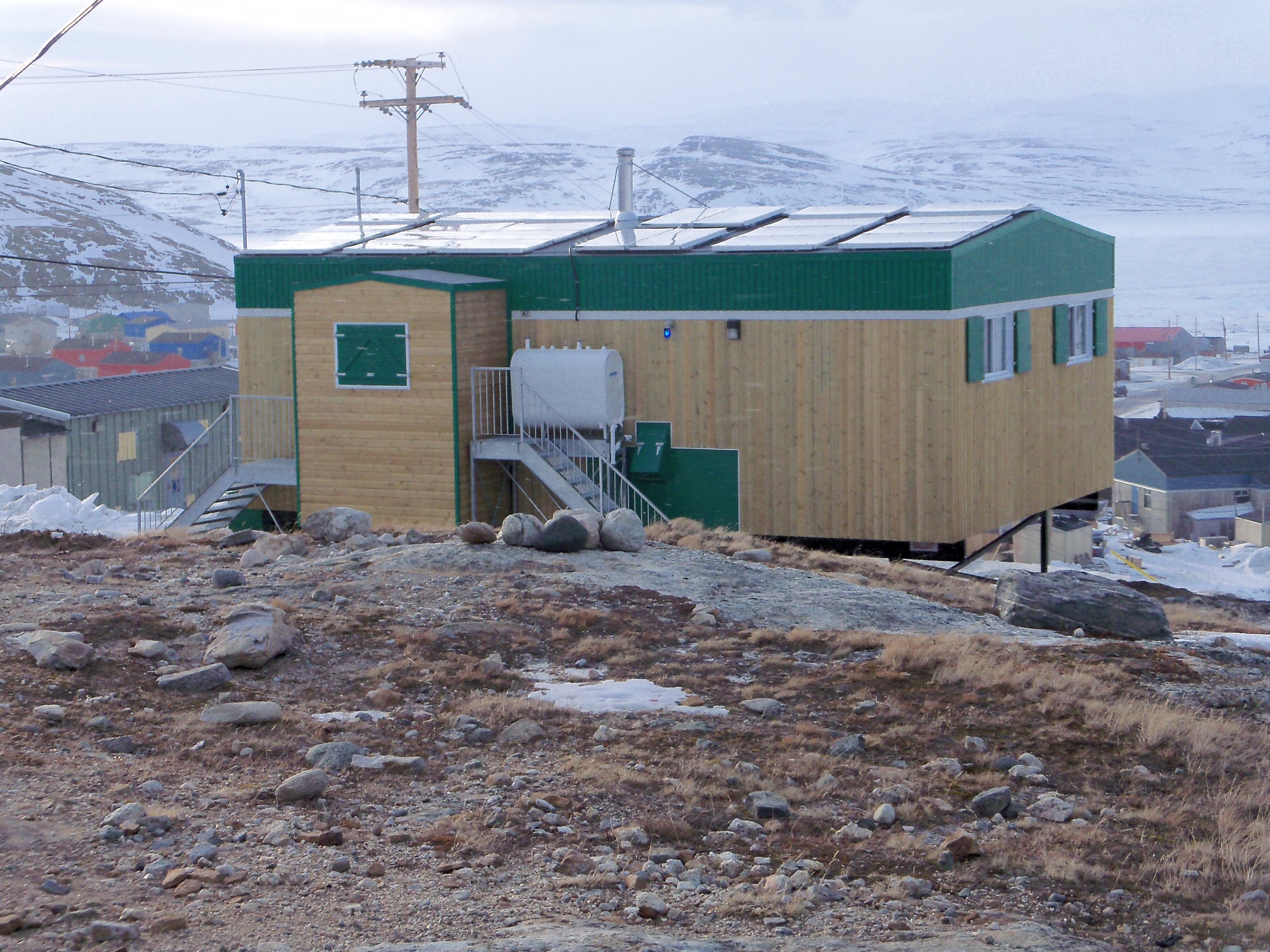CEN Salluit Research Station

Address
CEN Salluit Research Station467 Aqqutiqutaak St.
Salluit, Qc J0M 1S0
Station manager
Mickaél LemayStation Features
Opening year: 2011 Status: OpenFacilities
Station name and owner
CEN Salluit Research Station is owned and run by Centre d'etudes Nordiques (CEN: Centre for Northern Studies) whose secretariat is based at Université Laval, Québec, Canada.
Location
The station is situated in the Inuit community of Salluit, Nunavik, Québec, Canada (62°12'N, 75°38' W).
Climate data
Grey colours are WMO Climate Normals including maximum and minimum values. Blue colours are individual years.
Climate data for the stations where extracted via Copernicus Climate Data Store, from the global gridded reanalysis product:
ERA5 monthly averaged data on single levels from 1940 to present.
Description and source code: Roemer J.K. 2023. https://doi.org/10.5281/zenodo.10214922
Data Source: Hersbach et al. 2023. Copernicus Climate Change Service (C3S) Climate Data Store (CDS), https://doi.org/10.24381/cds.f17050d7
Biodiversity and natural environment
Salluit is located in the low arctic tundra in the continuous permafrost zone. The hilly bedrock consists principally of gneissic rocks from the Precambrian belonging to the Canadian Shield. The village is located in a valley that opens to the shore of Sugluk inlet (a fjord). The surrounding landscape consists of rocky plateaus with a hilly topography. The region was deglaciated about 8000 years ago and sectors below the elevation of 150 m were inundated by the post-glacial d’Iberville Sea. Till and some glacio-fluvial sediments are the major surficial materials on the plateaus, while the Salluit valley and the other valleys that connect with the fjord (particularly at the fjord head) are floored with fluvial sediments in terraces and marine clay. The geology and the oceanography of the fjord are poorly studied. The fjord opens to Hudson Strait. Mean annual air temperature is c. -8 °C and annual precipitation c. 300 mm (50 % snow).
History and facilities
Research has been conducted in the region in both natural and human sciences since the early 1960s by various groups. Permafrost research by the CEN began in 1987. In the context of Climate Change, a major research program was undertaken in 2002 to support community adaptation to changing permafrost and to assist the community in addressing housing and infrastructure needs for the rapidly growing population. The field station (a house) was built in 2010 thanks to a grant acquired from a federal research infrastructure program.
General research and databases
Numerous theses and research papers have been published on permafrost, periglacial geomorphology (ice-wedges, slope processes), archaeology, climatology, paleo-climate (paleo-soils and lake cores), population, culture, and land management in the area. Climate and permafrost temperature data from automatic stations, in operation since August 2002, are available upon request at cen@cen.ulaval.ca. Data available through Nordicana D: www.cen.ulaval.ca/nordicanad/.
Station Monitoring
Human dimension
Inuit and their ancestors have occupied the region for over 3500 years. Many of the key archaeological sites of the Hudson Strait region are along the fjord coastline and along Hudson Strait. The shift from a nomadic lifestyle to permanent settlement led to the growth of the village in the 1930s with the installation of the Hudson Bay Company and churches. The population size has reached about 1350 inhabitants, with youths constituting an important part of the population.
Access
Access is by commercial airlines from Montréal and Québec city. Every summer, several cargo ships allow shipping of heavy equipment and materials, though this requires planning in advance. The station has no permanent staff. Local support for services and field work is available in the community. Station ­users are instructed to do their cleaning and take good care of the premises and do minimal maintenance, if needed. Contact CEN (station@cen.ulaval.ca) for more information.

